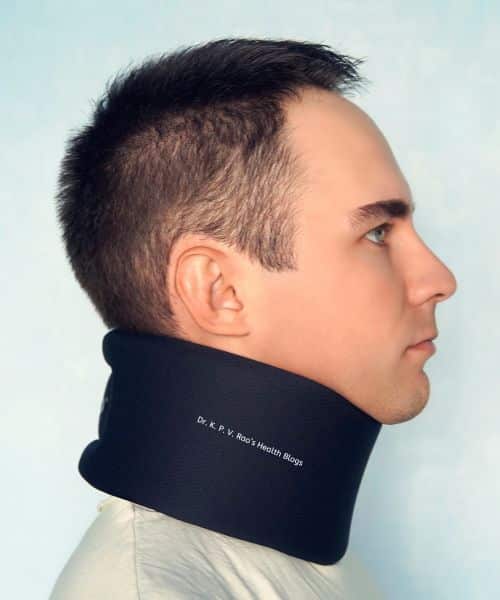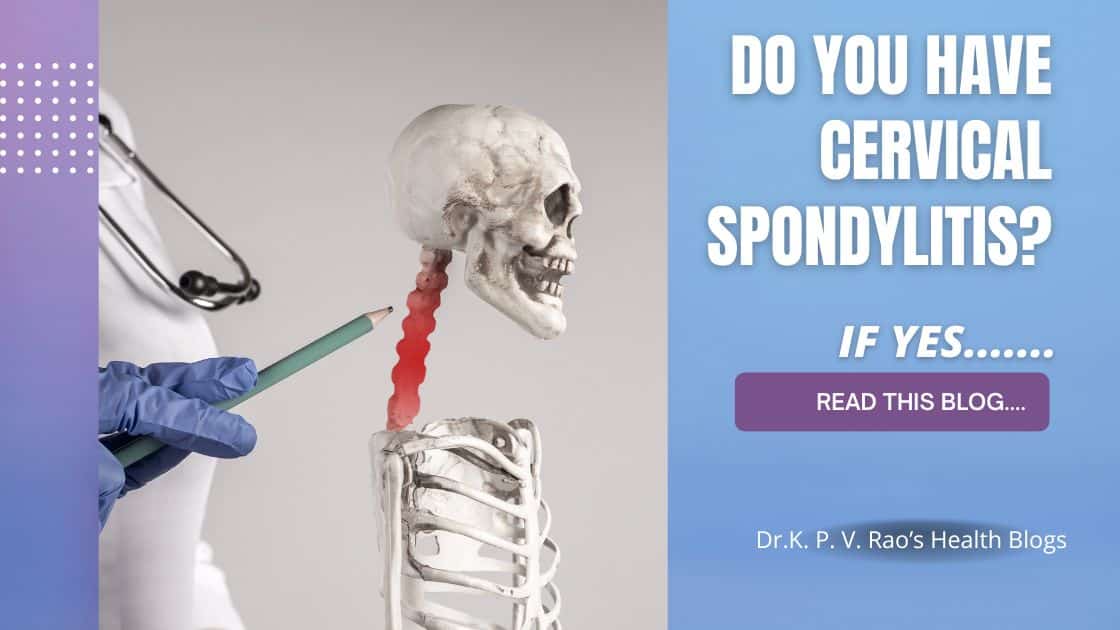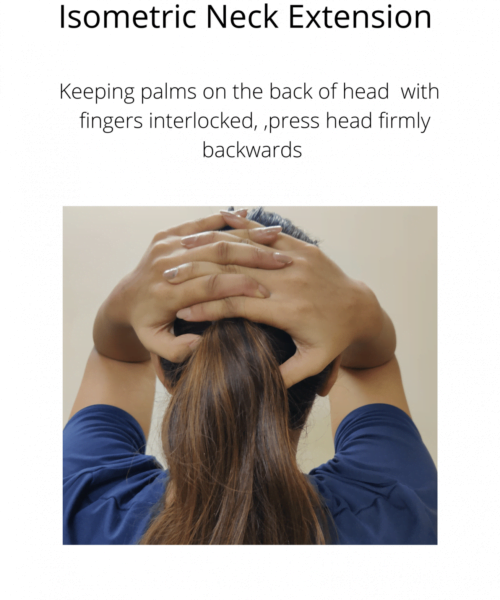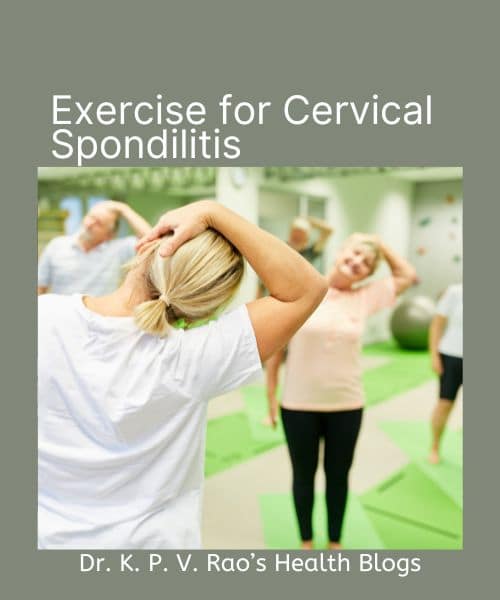
Table of Contents
INTRODUCTION
Are you experiencing neck pain, stiffness, and numbness? It could be a result of cervical spondylitis, a common condition that affects the cervical spine. Understanding the causes, symptoms, and potential treatment options of cervical spondylitis can help you manage the discomfort and improve your quality of life.
Cervical spondylitis, also known as cervical osteoarthritis, is a degenerative condition that affects the joints and discs in the neck.
It commonly occurs due to the wear and tear of cartilage and bones in the cervical spine. This can lead to the development of bony spurs, which may impinge on nerves and cause pain and stiffness.
What is cervical spondylitis?
Cervical spondylitis, also referred to as cervical osteoarthritis, is a condition that affects the joints and discs in the neck.
It is a degenerative disorder that typically occurs due to the natural wear and tear of the cervical spine over time.
The cervical spine is composed of seven vertebrae, and the gradual deterioration of the cartilage and bones in this area can result in cervical spondylitis.
The wear and tear of the cervical spine can lead to the formation of new bone growth, also known as osteophytes, which can compress the nerves in the neck that supplies sensory and motor nerves to parts of our hands, neck and shoulders, causing pain and stiffness.
These bony spurs can also contribute to the narrowing of the spinal canal, a condition known as spinal stenosis, which can further exacerbate the symptoms of cervical spondylitis.
Causes of cervical spondylitis
Cervical spondylitis is primarily caused by the natural degeneration of the cervical spine as a result of aging and/or excessive neck movements.
Ever wondered what causes this natural degeneration? Well, imagine you are talking to someone. Observe that person while he speaks and, at the same time, try to note how many times he has nodded, moved his neck back and forth, etc.
This constant movement of our neck causes wear and tear in the discs that support the vertebrae and, ultimately causes thinning of the disc until it is fully worn out and unable to support the vertebrae.
The neck movements continue day in day out causing friction between two vertebrae and compressing the nerves that come out of the spinal cord that supplies our neck, shoulder and hands. This also leads to inflammation of the bony ends of vertebrae that causes pain, tingling and numbing sensation in parts supplied by those nerves.
However, certain factors can increase the risk of developing this condition. These include:
- Age: Cervical spondylitis is more commonly seen in individuals over the age of 50, as the wear and tear of the cervical spine becomes more prevalent with age.
- Gender: Studies reveal that women are more likely to develop cervical spondylitis compared to men.
- Genetics: There may be a genetic component that predisposes certain individuals to the development of cervical spondylitis.
- Occupation: Jobs that involve repetitive neck motions or prolonged sitting can increase the risk of cervical spondylitis.
- Injury: Previous neck injuries or trauma can contribute to the development of cervical spondylitis.
What are the symptoms of cervical spondylitis?
The symptoms of cervical spondylitis can vary from person to person, but they generally involve pain and stiffness in the neck. Some common symptoms include:
- Neck pain: The most common symptom of cervical spondylitis is neck pain. This pain can range from mild to severe and may be constant or intermittent.
- Headache: Many individuals with cervical spondylitis experience headaches, which can be localized or radiate from the neck to the back of the head.
- Shoulder pain: Pain in the shoulders is another common symptom of cervical spondylitis. This pain may radiate down the arm and into the hands.
- Numbness and tingling: Cervical spondylitis can cause numbness and tingling in the arms and hands. This sensation may be accompanied by weakness in the affected areas.
- Limited range of motion: Stiffness and a reduced ability to move the neck freely are common symptoms of cervical spondylitis.
- Giddiness: Some patients report with feeling dizzy when they move their neck. This is supposed to be due to kinking of the vertebrobasilar arteries that supply the brain. This artery passes through the two circular canal present in the transverse process of the cervical vertebrae. (Refer to this article- Cervival Vertigo and Dizzinesss)
Diagnosing cervical spondylitis
If you are experiencing symptoms of cervical spondylitis, it is important to seek medical attention for an accurate diagnosis.
A healthcare professional will typically begin the diagnostic process with a thorough physical examination and medical history review.
They may also order imaging tests, such as X-rays or magnetic resonance imaging (MRI), to assess the condition of the cervical spine and identify any bone abnormalities or disc degeneration.
What to look out for in the X-ray of the cervical spine in cervical spondylitis?
If your doctor has ordered an X-ray of the cervical spine, he will be looking out for these signs to rule out cervical spondylitis:
- Loss of normal curvature: The natural curvature of the cervical spine may appear reduced or reversed giving an appearance of a straight bamboo.
- Disc degeneration: The intervertebral discs between the vertebrae may show signs of wear and tear, such as reduced disc height or disc space narrowing.
- Osteophyte formation: New bony outgrowths known as osteophytes may be visible along the edges of the vertebrae. This is due to friction between the two vertebrae due to degenerated disc separating them. These can contribute to the narrowing of the spinal canal.
- Spinal instability: Abnormal movement between the vertebrae may be evident, indicating spinal instability.
- Bone spurs: Bony projections known as bone spurs may develop along the edges of the vertebrae, potentially causing compression of nearby nerves thereby leading to tinglig-numbness in the hands and pain in arms and shoulders.
Please note that the above mentioned changes if present, indicate a diagnosis of cervical spondylitis; however, a proper diagnosis requires the expertise of a medical professional, and the interpretation of X-ray findings should be done by a qualified radiologist or your healthcare provider or a orthopedic surgeon.
Treatment options for cervical spondylitis
The treatment approach for cervical spondylitis depends on the severity of the symptoms and the impact on daily life. Treatment options range from conservative measures to surgical intervention in severe cases. It is important to consult with a healthcare professional to determine the most appropriate treatment plan for your specific condition.
Physical therapy for cervical spondylitis
Physical therapy is often recommended as a first-line treatment for cervical spondylitis. A physical therapist can design a personalized exercise program to improve neck strength and range of motion, reduce pain, and enhance overall function. These exercises may include stretching, strengthening, and postural correction techniques.
What are the best recommended physiotherapy exercises to relieve pain of cervical spondylitis?
Cervical spondylitis exercises can help relieve pain. It would be better if you consult a healthcare professional before starting any exercise program for cervical spondylitis, as improper exercises can worsen your pain and symptoms.
Here are some recommended exercises by orthopedic surgeons:
- Neck stretches: Gently tilt your head to the left, right, forward, and backward.
- Shoulder rolls: Rotate your shoulders forward and backward in a circular motion.
- Chin tucks: Retract your chin inward without tilting your head.
- Shoulder blade squeezes: Squeeze your shoulder blades together.
- Cervical rotations: Rotate your neck slowly from side to side.
- Isometric exercises: Press your palm against your forehead, applying resistance.
- Upper back stretches: Stretch your upper back by clasping your hands in front and rounding your upper back.
Medications for cervical spondylitis
Medications may be prescribed to manage the pain and inflammation associated with cervical spondylitis. Nonsteroidal anti-inflammatory drugs (NSAIDs) are commonly used to reduce pain and swelling. A medicine containing Vitamin B12 and Pregablin may also be prescribed by your doctor in addition to painkillers.
Muscle relaxants may also be prescribed to reduce muscle spasms in the neck. In some cases, corticosteroid injections may be recommended for more severe pain and inflammation.
*Consult your doctor for medicines- please do not self-medicate.
Some doctors also prescribe neck collars, also called Cervical collars, to prevent excessive neck movement and reduce pain, tingling and numbness.

Surgical options for cervical spondylitis
Surgical intervention is typically considered when conservative treatments fail to provide relief or in cases where the condition is significantly impacting daily life.
The specific surgical procedure will depend on the individual’s condition and the severity of the cervical spondylitis.
Detailed discussion about surgery in this condition is beyond the scope of this article. However, just for your information, common surgical options include discectomy, laminectomy, and spinal fusion.
Exercises for cervical spondylitis
In addition to physical therapy exercises, there are several exercises that individuals with cervical spondylitis can perform at home to help alleviate symptoms and improve neck strength and flexibility. Here are some exercises that I recommend to my patients…
Other than the above shown exercises, these exercises may also include neck stretches, shoulder rolls, and gentle neck rotations.
*It is important to consult with a healthcare professional or physical therapist before starting any exercise program to ensure safety and effectiveness.
Conclusion
Cervical spondylitis is a common condition that affects the neck and can cause pain, stiffness, and numbness. Understanding the causes, symptoms, and treatment options for cervical spondylitis can help individuals manage the condition and improve their quality of life.
Whether through physical therapy, medications, or surgical intervention, there are various approaches that can be taken to overcome symptoms and enhance neck function.
If you are experiencing symptoms of cervical spondylitis, it is important to seek medical attention for an accurate diagnosis and a personalized treatment plan.
With the right management strategies, individuals with cervical spondylitis can find relief and regain control over their neck health.
Final words
Hope you have found this article useful. My next article will be on a similar condition- Lumbar Spondylitis- the cause for chronic backache.
Do promote my blogs by sharing this artcle using social media icons at the bottom of this artcle or just Click to Tweet here-
Understanding Cervical Spondylitis: Causes, Symptoms, and Treatment Options Share on XAdios.









